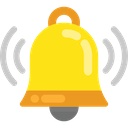6inline
Freshman Member
Offline
I have run into an electrical impass on my 100-6. My Ignition lamp in the speedo was remaining on so I tested the dynamo....no output. I removed the dynamo, opened it up and it looked like burnt toast. No problem, I purchased a new alternator (one in a dynamo case so it looks original), reversed polarity and went to start it. Odd thing, it turned over very slowly. Well, it had been a few weeks since I had driven it, so I hooked up a charger. Once fully charged I gave it another go...nothing. I have 12+ volts at the solenoid, 12+ volts at the starter post, yet it won’t turn over.
Prior to removing the generator it started as always, no problems. Even when the generator was not producing any voltage. Is it possible that reversing polarity might have damaged the starter? I added a ground strap on one of the bell housing bolts just to be sure that I had adequate ground, but it did nothing.
Does anyone have any thoughts before I remove the starter? Any ideas are appreciated.
Prior to removing the generator it started as always, no problems. Even when the generator was not producing any voltage. Is it possible that reversing polarity might have damaged the starter? I added a ground strap on one of the bell housing bolts just to be sure that I had adequate ground, but it did nothing.
Does anyone have any thoughts before I remove the starter? Any ideas are appreciated.

 Hi Guest!
Hi Guest!
 smilie in place of the real @
smilie in place of the real @
 Pretty Please - add it to our Events forum(s) and add to the calendar! >>
Pretty Please - add it to our Events forum(s) and add to the calendar! >> 

